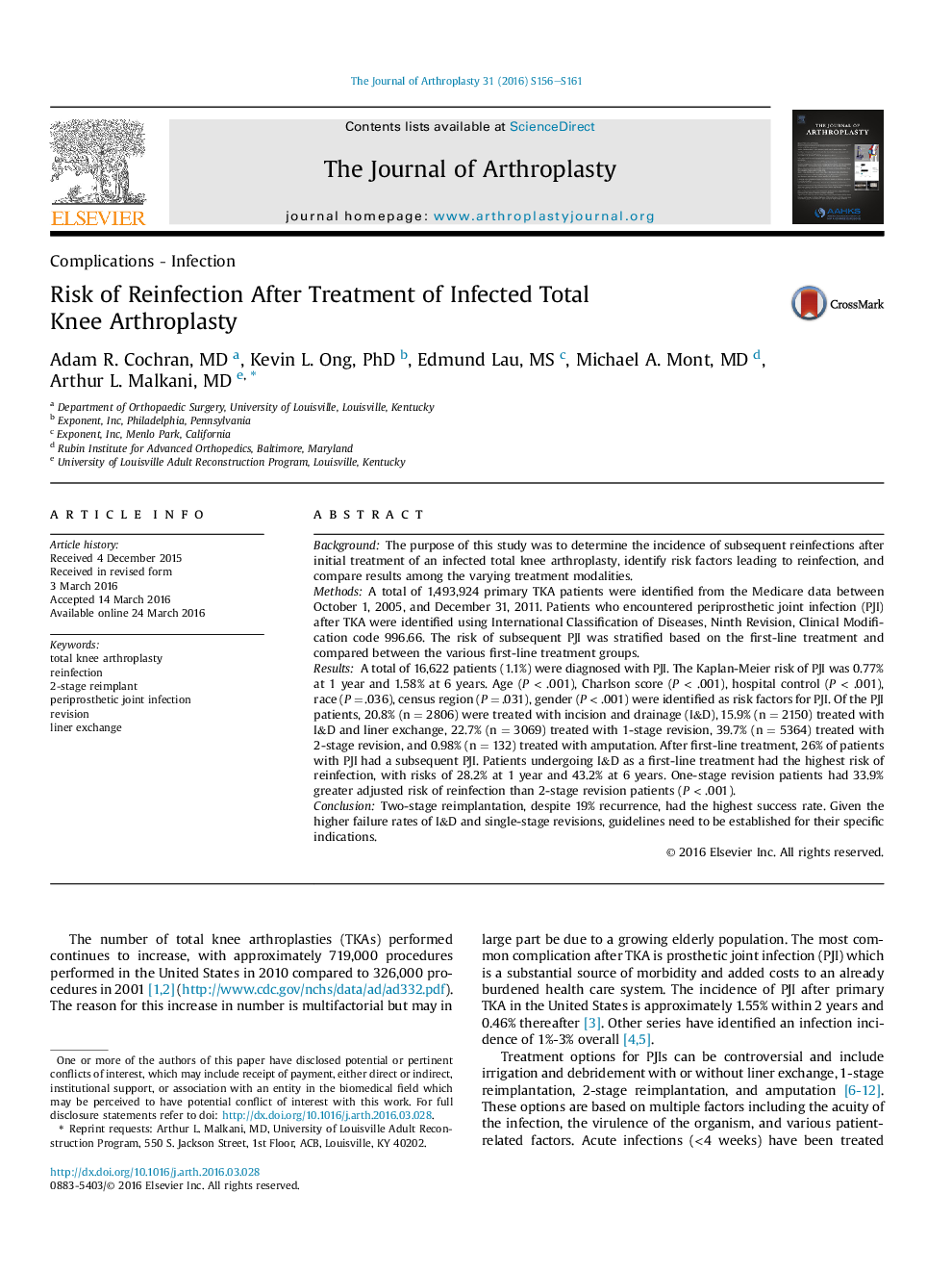| کد مقاله | کد نشریه | سال انتشار | مقاله انگلیسی | نسخه تمام متن |
|---|---|---|---|---|
| 6208370 | 1603973 | 2016 | 6 صفحه PDF | دانلود رایگان |
BackgroundThe purpose of this study was to determine the incidence of subsequent reinfections after initial treatment of an infected total knee arthroplasty, identify risk factors leading to reinfection, and compare results among the varying treatment modalities.MethodsA total of 1,493,924 primary TKA patients were identified from the Medicare data between October 1, 2005, and December 31, 2011. Patients who encountered periprosthetic joint infection (PJI) after TKA were identified using International Classification of Diseases, Ninth Revision, Clinical Modification code 996.66. The risk of subsequent PJI was stratified based on the first-line treatment and compared between the various first-line treatment groups.ResultsA total of 16,622 patients (1.1%) were diagnosed with PJI. The Kaplan-Meier risk of PJI was 0.77% at 1 year and 1.58% at 6 years. Age (P < .001), Charlson score (P < .001), hospital control (P < .001), race (P = .036), census region (P = .031), gender (P < .001) were identified as risk factors for PJI. Of the PJI patients, 20.8% (n = 2806) were treated with incision and drainage (I&D), 15.9% (n = 2150) treated with I&D and liner exchange, 22.7% (n = 3069) treated with 1-stage revision, 39.7% (n = 5364) treated with 2-stage revision, and 0.98% (n = 132) treated with amputation. After first-line treatment, 26% of patients with PJI had a subsequent PJI. Patients undergoing I&D as a first-line treatment had the highest risk of reinfection, with risks of 28.2% at 1 year and 43.2% at 6 years. One-stage revision patients had 33.9% greater adjusted risk of reinfection than 2-stage revision patients (P < .001).ConclusionTwo-stage reimplantation, despite 19% recurrence, had the highest success rate. Given the higher failure rates of I&D and single-stage revisions, guidelines need to be established for their specific indications.
Journal: The Journal of Arthroplasty - Volume 31, Issue 9, Supplement, September 2016, Pages 156-161
